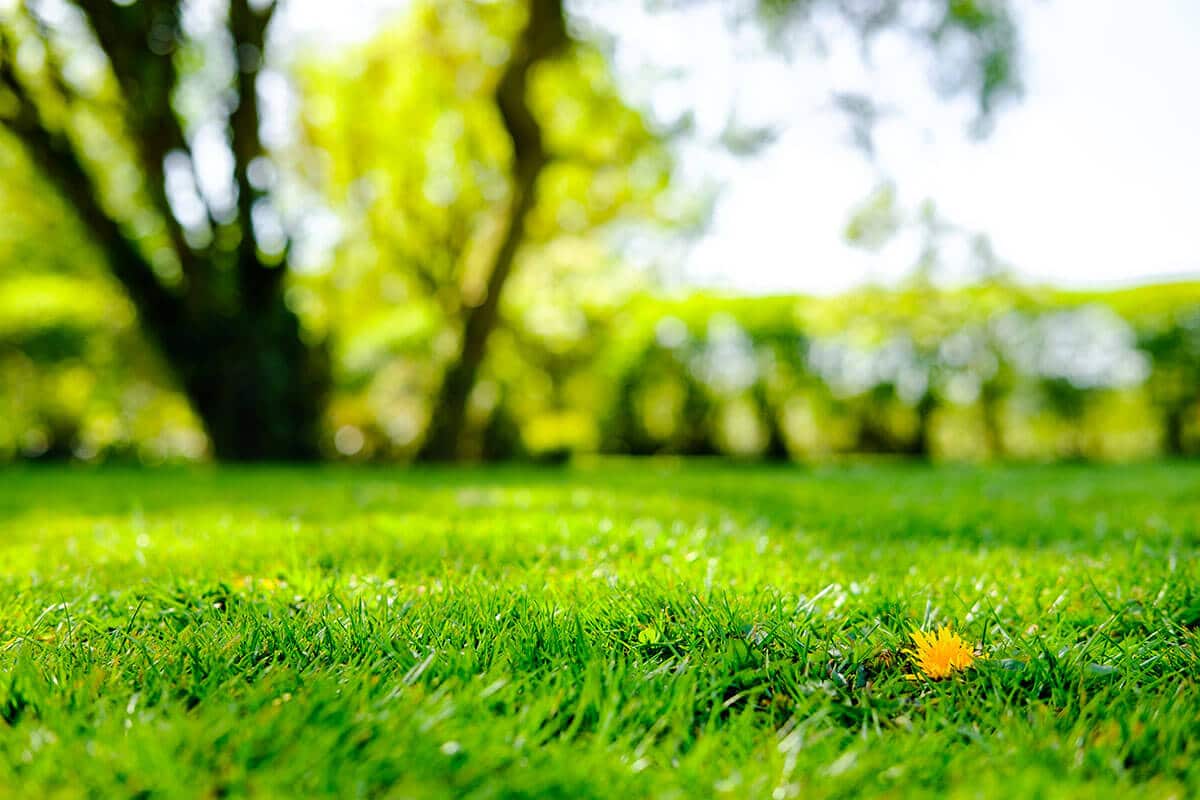Table of content
SPRING
Cleaning
As soon as the snow has melted and the soil has absorbed the water, the area should be cleaned up quickly to give the lawn a chance to regain its vigor as soon as possible. Vigorously scrape the entire lawn area to remove stones, excess thatch, dead grass and other debris left over from the winter with a good leaf broom.
Repairing
Every patch of yellow or dead grass should absolutely be repaired. They are wide opened doors for insects and unwanted weeds. Remove all dead grass, add a layer of lawn soil or compost and cover with grass seed. Be sure to keep the soil moist for two weeks after seeding.
Aerating
If your lawn is hard, uncomfortable to walk on, or you notice that water is having trouble penetrating the soil, your soil is too compact and needs to be aerated. The mechanical aerator, available at any good tool rental store, will make holes in your lawn by pulling out cores of soil. These holes will loosen the soil to allow water and oxygen to pass through the roots of your lawn. You can then break up the cores with a leaf broom to make it easier to get them to decompose.
Topdressing and overseeding
Topdressing consists of adding a thin layer of potting soil or compost to the entire surface of your lawn to improve the structure of your soil by adding organic matter. To thicken your lawn, add grass seed designed for your type of sunshine to your potting soil. Keep the soil moist for two weeks until it germinates. A thicker lawn will prevent weeds and insects from establishing themselves in your lawn since it is harder for them to reach the soil they need to germinate or hatch.
Mowing
Mowing is an important part of lawn care. In the spring, for the first mowing of the season, lower the blades of your mower to about 5 cm. This will allow the lawn to breathe after the long, wet winter months. Afterwards, raise your blades to 8 cm for the entire season. A longer lawn is more resistant to weather and insect attacks. never cut more than a third of the grass blade in a single cut. Make sure your mower blades are sharp so that the cut is clean and crips, which will prevent injuries that could allow diseases to take hold. Leave the clippings in place, they are natural fertilizer for your lawn. This is called grasscycling.
Fertilizing
Fertilizers are used to feed the lawn and provide it with what it needs to grow efficiently. Fertilization should be done at different times of the year using a staged fertilization program, available in both natural and synthetic versions. Always follow the label instructions for amounts. Don’t over-apply, it won’t do you any favours, on the contrary: your lawn could burn and the part that can’t be assimilated by the plant will end up in the environment.
SUMMER
Watering
Lawns need 2.5 cm of water weekly to stay healthy. In the spring and fall, this amount of water is usually replenished by rain and dew, so there is no need to water except when you are just seeding. In summer, when rain is scarce and temperatures are very hot, your lawn may need water. Always water deeply: longer, less often. Shallow watering does not encourage the roots to go deep into the soil. Ideally, if your municipal bylaws allow it, water early in the morning or late in the afternoon. Avoid watering during the day, as evaporation is too high, or late in the evening, which encourages the development of fungal diseases.
If your lawn turns yellow and dries out almost completely, it is because it has gone into a dormant period to protect itself from the heat and dryness. It is not dead, it just concentrates its energies on its roots to the detriment of the aerial part. Don’t worry, as soon as the temperatures return to normal and a good rain falls, it will regain its beautiful green colour.
Fertilizing
In summer, there is a second step of fertilization to be done. Follow the manufacturer’s recommendations for the best time to apply your lawn fertilizer. This step is important because it ensures that your lawn has all the nutrients it needs to withstand drought, heat and pest attacks.
Lawn monitoring and insects’ control
Summer is the time when insect damage is most visible and it is also the time to be vigilant. If caught early, insect infestations are easier to control. If you notice a change in the general condition of your lawn or see insects, come and discuss it with us. Our specialists will be able to help you identify the pest and give you the means to control it effectively. It may be necessary to hire a lawn care company to deal with the situation. Remember, a healthy, thick lawn is the best way to effectively combat insect infestations.
Mowing
Leave your mower blades at 8 cm during the warm season and avoid mowing if your lawn is dormant. Your lawn is not growing during this period and you may be causing it a lot of stress by mowing.
FALL
Fertilizing
Fall fertilization is very important as it gives your lawn everything it needs to get through the winter slowly. Don’t wait too long, fertilize while the lawn is still growing.
Mowing
Lawns should be mowed while they are still growing. Until the last mowing, when the mower blades can be lowered to 5 cm to allow the lawn to breathe before winter, keep the mowing height at 8 cm.
Repairing
If some areas have been damaged during the summer, due to insects or drought, they should be repaired immediately. As in the spring, spread a layer of topsoil over the patch to be repaired and add grass seed.
Aerating, topdressing and overseeding
Fall is also a good time to aerate, topdress and overseed the lawn. You can even do this twice a year, there is no risk in doing it more than once a year. These are great ways to strengthen your lawn before winter, and it will certainly green up faster next spring.
Leaf rake
Too much leaf litter on your lawn can smother it or cause it to rot by blocking out the sun. So, you need to rake them up. You can use them as mulch in your flowerbeds to protect the roots of your perennials. In the spring, almost all of it will have been decomposed by the snow, the rest can be composted during your spring cleanup. If you don’t want to do the chore of collecting the leaves, you can run your mower in shredding mode and leave them on the lawn. This way, they won’t overshadow the lawn and will even serve to nourish the soil. This is called leaf cycling.
Winter protection
Ice melter and other abrasives, snow removal equipment and ice can damage your lawn. You can protect it by installing protective covers, mainly along streets and alleys. Use specially designed covers that allow the lawn to breathe, and do not install them too early in the fall: your lawn may suffer from the heat. Also, as soon as the snow melts in the spring, they should be removed. In addition to protecting your lawn, winter covers make spring cleanup easier.
You now know all about season-long lawn care. Find all the products you need to care for your lawn: soil, compost, fertilizer, seeds and more in our store. If you need help making a proper diagnosis, don’t hesitate to come and discuss it with our specialists!






